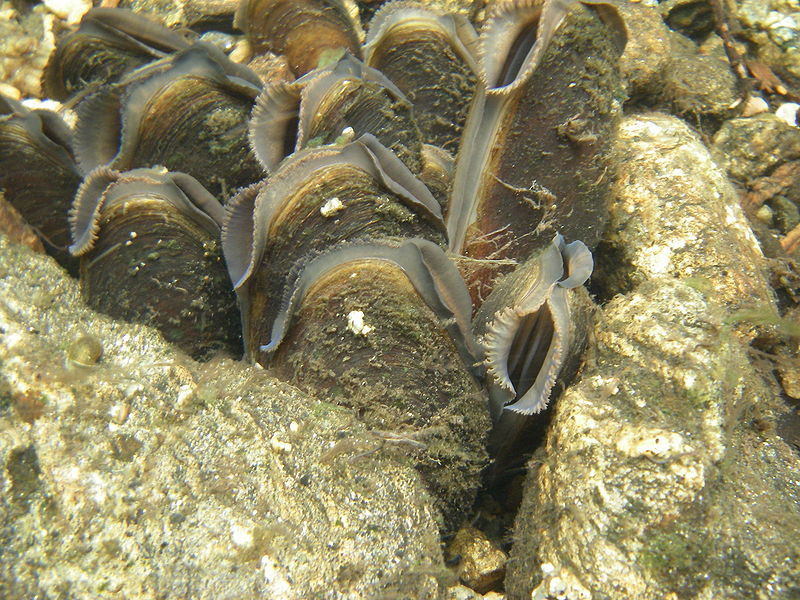Adaptation
Movement:
The pink mucket moves very little.
It has no appendages or ways of locomotion. They depend on
the current of the water to bring them oxygen and food.

Other adaptations: The Pink Mucket,
and even other freshwater mussels have adapted to their habitat
and enviorment in a few ways. To begin with, they have
grown their hard outer shell to protect them. Although
some shells may be thicker than others. Mussel shells are
composed of 3 layers, the outer two being formed by glands at
the edge of the mantle, and the inner, iridescent or nacre layer
is secreted by the mantle surface. In general, mussels
that inhabit rivers or streams with a fairly fast current
develop thicker shells than those found in shallow, quiet areas.

Marine mussels are usually found clumped together on wave-washed
rocks.. The clumping habit helps hold the mussels onto the
substrate against the force of the waves. At low tide mussels in
the middle of a clump will undergo less water loss because of
water capture by the other mussels Marine mussels are
usually found clumped together on wave-washed rocks.. The
clumping habit helps hold the mussels onto the substrate against
the force of the waves. At low tide mussels in the middle of a
clump will undergo less water loss because of water capture by
the other mussels
To move onto the nutrition page
CLICK HERE